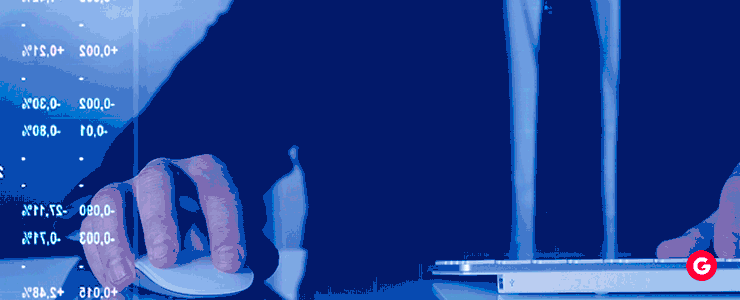CFD 거래입니다. is an exciting financial trend that has become more prevalent over the past few years, although even the most seasoned players may need clarification about margin and leverage. These concepts are essential in profit maximization and risk management in the forex market.
In this article, we explore the concepts of the market, margin, and leverage and how they relate to . We also examine various trading platforms like MT4 and why they are highly favored among traders.
Leverage and Margin: What is Leverage?
Leverage in forex is the amount of capital or currency that allows individuals to hold a large position in the market with a relatively minor investment.
Leverage in forex trading refers to the facility brokers provide to help traders hold a prominent position using small funds. A trader can amplify their market exposure and potential profits by using a small fraction of the total trade.
Leverage magnifies both profits and losses. If a trade moves in the trader’s favor, the heightened position initiates sizeable profits. Losses are amplified if the trade counter declines in the trader’s favor.
The tendency of leverage to enhance potential profits and losses makes it a double-edged sword. Various leverage strategies are used in our online trading:
- CFD Trading ( Contracts for Difference)
- 외환 거래
- Futures trading
Leverage plays a crucial role in CFD trading, enabling traders to maximize their price movement exposure with limited capital. FXGiants offers a hassle-free experience for CFD traders with the option of customizable leverage.

Leverage Ratio and Its Types
The leverage ratio is the ratio between the funds the trader owns and the funds borrowed from the trader. For beginners, a lower leverage ratio like 1:10 or 1:20 has been recommended as they balance capital protection and profit attainment while minimizing potential loss.
An in depth analysis of a company’s financial composition and debt management can be obtained through leverage ratios. These ratios analyze various dimensions of leverage:
- Debt to Equity
- Debt Ratio
- Equity Ratio
FXGiants offers multiple competitive leverage ratios, making it a top trader choice. FXGiants caters to traders with diverse experience and risk tolerance with options like conservative or high leverage.
Example
- Assume a trader deposited $1,000 in his forex trading account.
- Using a leverage ratio of 1:100, he now makes a trade worth $100,000. If the market moves in the trader’s favor by 1%, his position will increase to $101,000, helping him attain a $1000 profit.
(A 100% return on the initial $1,000)
- Conversely, if the market moves against his favor by 1%, the trader’s position would drop to $99,000, resulting in a $1,000 loss, wiping out his initial investment completely.
Margin in Forex Trading
A margin is a small pocket of funds the forex broker sets apart from the trader’s account balance to guarantee that the trade remains functional. Unlike leverage, which magnifies the trade size, a margin is required to ensure traders have sufficient funds to cover any potential loss.
The amount of margin required depends on multiple factors, such as the market, the risk involved, and the type of asset. A margin is a unique type of leverage where existing securities can be used as collateral.
For instance, if a broker offers a 1% margin requirement and you want to trade a $100,000 position, you need to deposit $1,000 as margin. The remaining portion of the money is borrowed from the broker.
Margin trading’s most significant risk is the magnified potential loss. If your stock price drops, you will owe money on the entire investment, not just the amount you deposited. Thus, you may lose more than you invested.
Margin Levels and Types
Here are the types of margins and various levels used for multiple financial scalings:
- Initial Margin: The amount of money a trader needs to maintain in the account to begin future transactions.
- Maintenance Margin: The minimum equity needed to keep a position open.
- Margin Call: A margin call is a notice a trader receives if their maintenance margin falls below a required level, prompting them to deposit more funds or close some positions.
It is essential to maintain a sufficient balance in your account to prevent getting margin calls, and by using MT4 platforms, traders can easily monitor their margin levels.
Understanding the concepts of leverage and margin is vital for any CFD or Forex trader. It is important to note that leverage and margin work hand in hand. Since leverage can lead to increased profits and losses, margin ensures that traders can cover these potential losses.
FXGiants, paired with the MT4 Trading platform, offers beginners and seasoned traders a comprehensive and reliable platform for all their trading needs.

FAQs
What is leverage?
Leverage is the ability to control a large position using a small amount of capital, and it is usually denoted by a ratio called the leverage ratio. Increased leverage also increases the risk of losses.
What is margin?
Margin is the number of funds a broker keeps to keep a trading position open.
What is a margin call?
Suppose a trader’s equity has fallen below the level of the used margin. In that case, the amount of money in the trader’s account can no longer cover the margin requirements, and if the broker requests the trader to top up his equity, the trader will receive a margin call.
Summing Up
Traders are advised to avoid margin calls at all costs because failing to top up their equity will liquidate some of their positions.
FXGiants allows users to monitor their margin levels and reminds them to increase their equity when nearing margin calls.
DISCLAIMER: This information is not considered investment advice or an investment recommendation, but is instead a marketing communication
